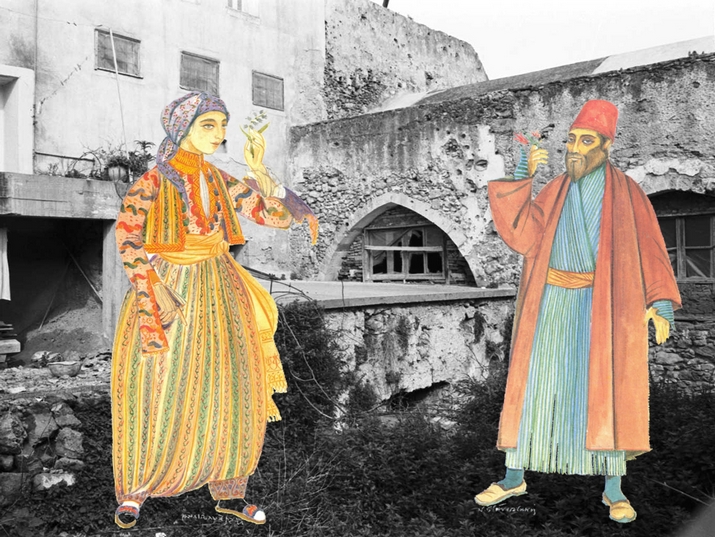Jews first arrived in Crete from Egypt some 2,300 years ago, perhaps as part of Egyptian military campaigns. A century or two later, they came from the Land of Israel during the Maccabean Revolt.
At the time, Hellenized, Greek-speaking Jews were establishing communities throughout the Eastern Mediterranean, considered to be some of the oldest known Jewish diaspora communities.
Their descendants came to be known as “Romaniote Jews,” over time developing a distinct culture including liturgical traditions and songs, and speaking “Yevanic”, a Judeo-Greek dialect infused with Hebrew loanwords and written in Hebrew script.
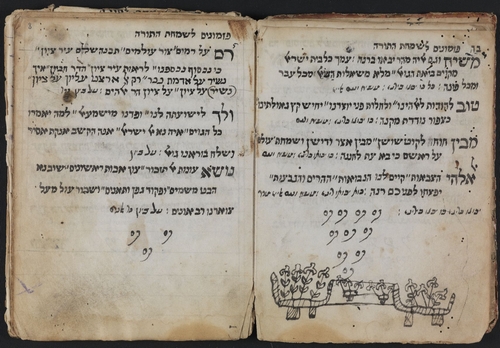
Romaniote synagogues even have a distinct interior layout that differs from Sephardic and Ashkenazi synagogues.
Through ancient inscriptions, medieval manuscripts and other written and archaeological sources, we can trace some of the history of Cretan Jewry, which thrived under Greek, Roman, Byzantine, Andalusian Arab, Venetian and Ottoman control, before being nearly extinguished under German occupation in 1944.
Today, the Etz Hayyim Synagogue in Hania is practically the only remaining testament on the island to the rich Cretan Jewish heritage, which spanned two millennia.
Ancient sources
Jewish communities on Crete are first referenced in 4th century BCE epitaph inscriptions from Kassanoi and Kissamos where, in the city of Kissamos, a “Sophia of Gortyna, an elder and leader of the synagogue” attests to the leading role of women in diaspora communities.
A community in Gortyna is described in the First Book of Maccabees (15:23) dating to around 142 BCE, when Gortyna was the most prosperous city in Crete. Although only fragmentary inscriptions remain in Crete, inscriptions dating to the 3rd and 2nd centuries BCE from an ancient synagogue on the island of Delos honor two citizens of the Cretan cities of Heraklion and Knossos, providing evidence of the existence of a Jewish community on the island during that period, as well.
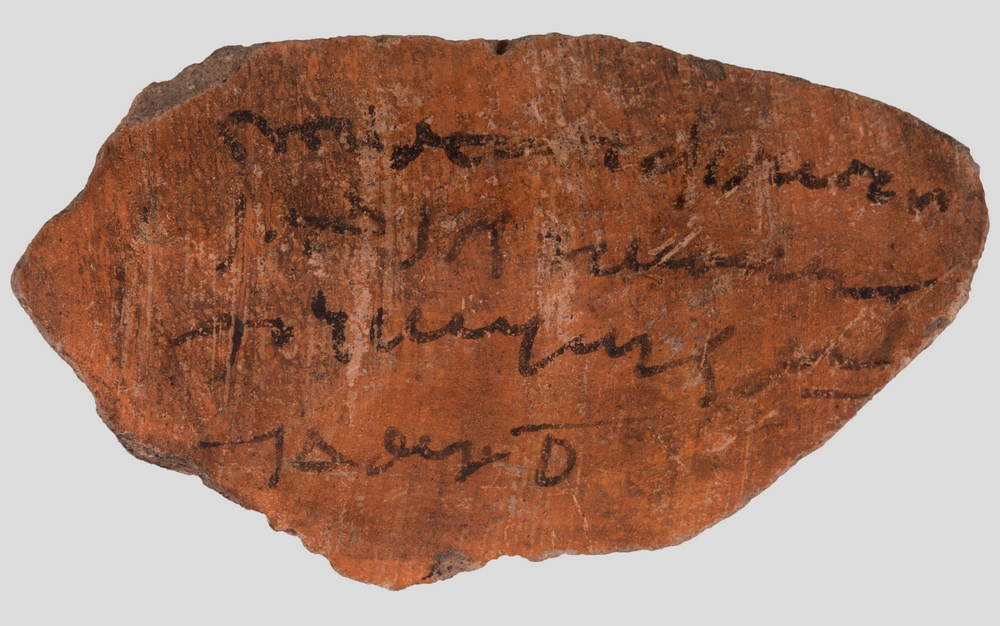
By the time of the Roman conquest of Crete in the 1st century BCE, Jewish communities were thriving in most of the major cities, including Gortyna, Kissamos, Hania, Rethymnon, Knossos and Sitia.
According to the renowned Jewish philosopher Philo of Alexandria, the larger Greek islands, including Crete, were “full of Jewish settlements” (Legatione ad Gaium, 282).
Jewish communities in Crete are also referenced in the New Testament’s Acts of the Apostles (2:11) as having been present at Pentecost (Shavuot) in Jerusalem, as well as in the Epistle of Paul to Titus (1-9:16) in which Paul describes the “Jewish Christians” in Crete. After the fall of the Roman Empire in the West in 476 CE, Roman rule continued in the eastern part of the empire, later termed the Byzantine Empire, where its citizens continued to view themselves as “Romans”, a term that would eventually be associated with the Greek-speaking Jews, the Romaniotes.

At the time, Crete was one of the 64 provinces of the Byzantine Empire, with its capital in Constantinople. Jews are not explicitly mentioned in extant historical accounts from the short-lived “Emirate of Crete” (825-961 CE), established following the Andalusian Arab conquest of the island, but they certainly remained.
During the late Byzantine period (961-1204 CE), historical sources indicate that Jewish communities were not permitted to live within the island’s walled cities, but were instead required to live outside the walls as close as possible to the main city gates which offered protection in times of danger.
Into and outside the Ghetto
In 1204, after the sacking of Constantinople as part of the 4th Crusade, which led to the temporary dissolution of the Byzantine Empire, Crete became a Venetian colony called the “Kingdom of Kandia” with Heraklion (Kandia) as the island’s capital. According to Venetian accounts, Crete’s Jewish population grew significantly in the 14th and 15th centuries due to the influx of Sephardi Jews from the Iberian Peninsula following the exodus of 1391, the fall of Constantinople to the Ottoman Turks in 1453 and again after the Spanish Expulsion in 1492. It seems that these and other immigrant families were absorbed into the indigenous Romaniote communities through the adoption of the local language, culture and religious customs, along with intermarriage.
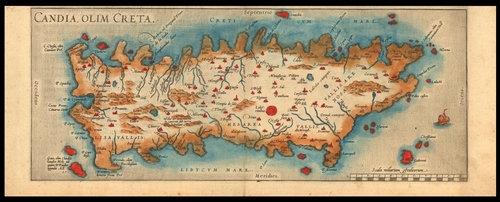
By the 16th century, the three main Cretan cities, Heraklion (Kandia), Rethymnon (Retimo) and Hania (La Canea) were flourishing under Venetian rule, their populations steadily growing and the economy thriving due to trade and shipping.
At this time, Cretan Jews maintained already-established communities in the three major cities, though they were required to live in segregated ghettos or quarters called “Zudecca“, where they worked as grocers, artisans, tanners, butchers, money lenders and traders of silk, metals, dyes and leather. They were also active in intellectual pursuits including philosophy and theology and many individuals travelled widely, especially to places like Padua and Mantova in Italy, where they trained as doctors, lawyers and rabbis.
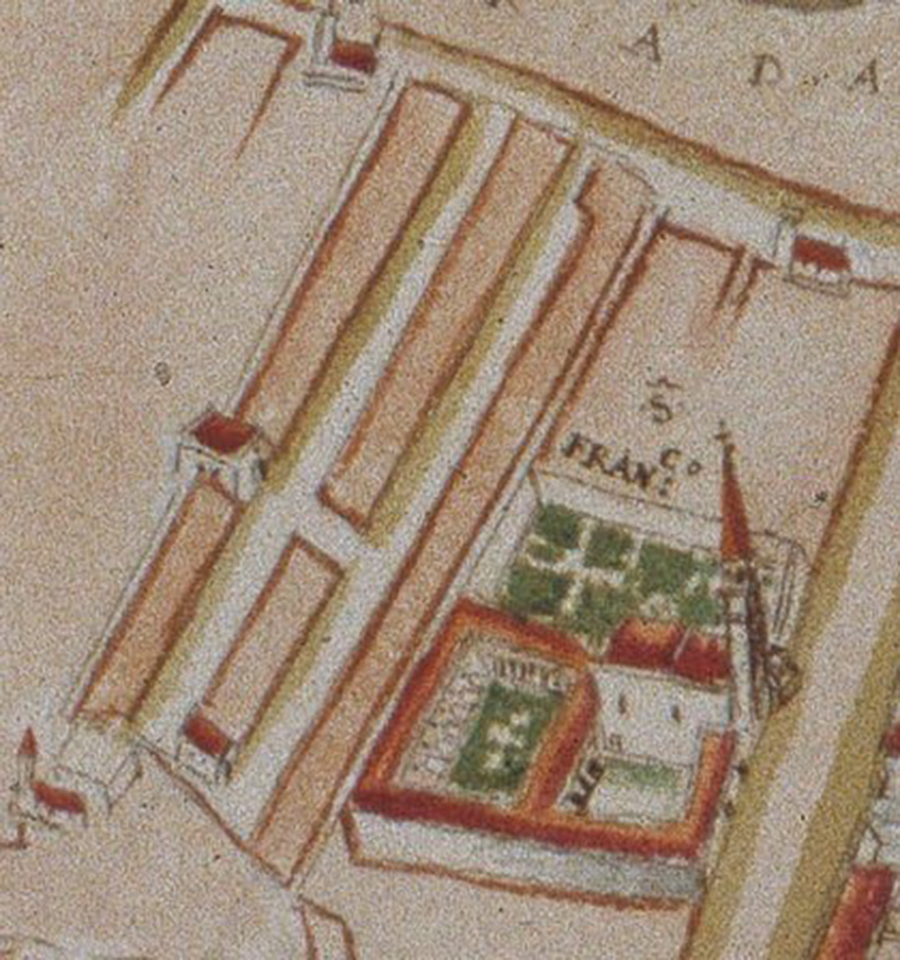
Alongside these urban communities were rural Jewish settlements, which produced kosher cheeses, wines, grains and citrons for both export and local use. By the end of the 16th century, there were approximately 1600 Jews in Crete who worshipped in up to nine synagogues around the island. At that time, Heraklion was the largest community with four synagogues. Hania had two: Beth Shalom (Sephardic) and Etz Hayyim (Romaniote), both of them located in the historic Jewish neighborhood of Evraiki.
The period of Ottoman rule in Crete (1669-1898), particularly in later years, brought economic hardship to the island’s general population, and as a result the Jewish communities in Heraklion and Rethymnon diminished.
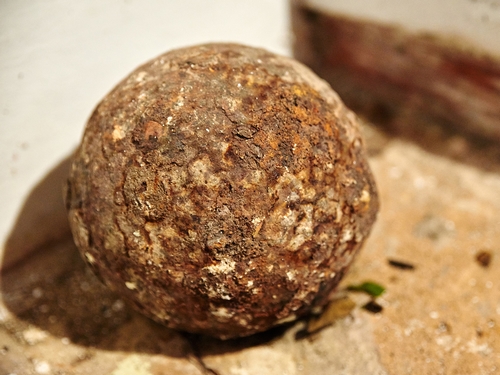
Many wealthy Jewish families moved to Hania, the new Ottoman capital of the island, and farther afield to Venice and elsewhere in Italy and to other Mediterranean port cities like Gibraltar, Istanbul and Salonika. Yet, Ottoman authority was also favorable to Crete’s Jewish communities, which were afforded some degree of religious autonomy, just like their Christian Orthodox neighbors, under the Ottoman millet system.
In towns like Hania, the former ghettos were opened and Jews were allowed to settle in neighbouring quarters where they were permitted to buy and legally inherit property for the first time.
This in particular may be what enticed Sephardic immigrants from North Africa and Izmir to the city at the time. However, by the 19th century, sporadic violent revolts against Ottoman rule in Crete led many Jews to emigrate elsewhere.
It is estimated that in 1817, there were 150 Jewish families divided between Heraklion and Hania; in 1858, there were 907 Jews on the island; by 1881, there were only 647 Jews in Crete, with the majority residing in Hania.
German occupation
The German occupation of Greece began in April 1941 and lasted until 1945. Following the failed Italian invasion of Greece in October 1940, Germany assisted its Italian and Bulgarian allies in their expansionist aspirations and invaded the country.
Crete itself was invaded by the Germans in May 1941 through a major airborne campaign, and the three main cities of Hania, Rethymnon and Heraklion were badly bombed. The Germans were met by fierce resistance from the local population and by the Allied forces, but they eventually prevailed and established their occupation regime in June 1941.
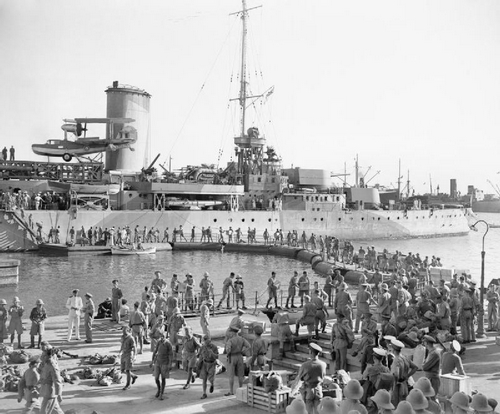
From this time onwards, most of Crete’s Jews, numbering only about 350 members, were residing in Hania where they increasingly faced restrictions imposed upon their daily lives. Some individuals managed to escape Crete for Athens during the occupation. Some survived there in hiding, while others were eventually arrested and sent to the extermination camps.
It was not until 1944 that the Hania community was to be deported to Auschwitz.
On May 20th of that year, the Cretan Jewish community was arrested and taken to a local prison for two weeks before being transported to Heraklion, where they boarded a German steamship, the Tánaïs, together with Italian prisoners of war and Cretan resistance fighters. The ship was to sail to Athens and the Jewish prisoners were then to be transported by train to the death camps in Poland. Due to the ongoing naval war in the Mediterranean, however, the ship was torpedoed by a British submarine not long after departing Heraklion and it sank with all of its prisoners in the early hours of June 9, 1944.
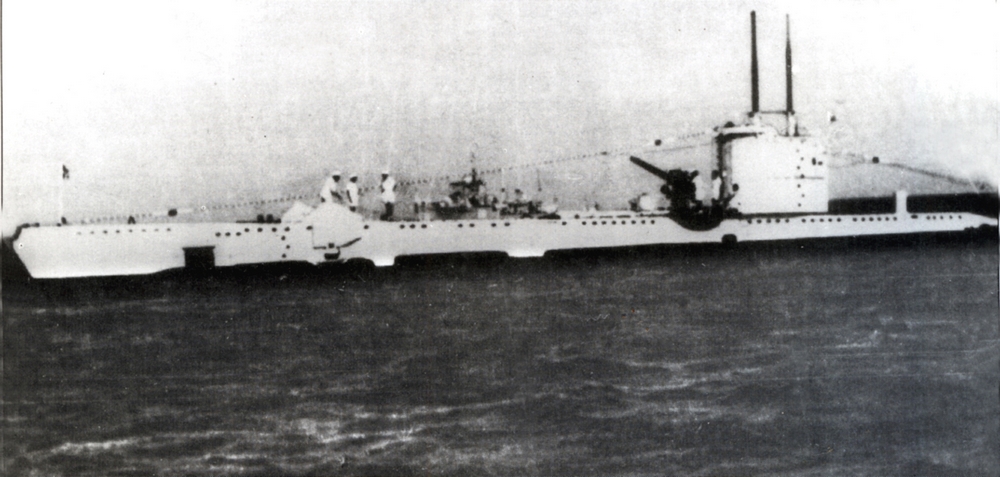
Once the community had been deported, Hania’s Jewish neighbourhood was ransacked by the Nazis who also stripped the Etz Hayyim Synagogue – the island’s last remaining Jewish house of prayer – of its religious artifacts, books and the centuries-old community archive.
Etz Hayyim stood abandoned from then until the 1990s, when Hania resident Nikos Stavroulakis (an artist, art historian and founding director of the Jewish Museum of Greece) decided to rebuild and revive the synagogue.
Reviving Etz Hayyim and the Cretan Jewish tradition
Almost 50 years after the end of WWII, the fortunes of the Etz Hayyim Synagogue were to change thanks to Nikos, who managed to garner significant interest and funding to fully restore the synagogue in just a few short years.
Heading the work under the aegis of the World Monuments Fund in cooperation with the Central Board of Jewish Communities in Greece (KISE), Nikos secured support from leading European Jewish philanthropists – including the Rothschilds and the Lauders – as well as numerous other foundations, agencies and individuals.
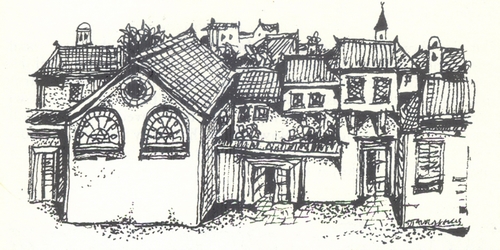
On October 10, 1999 the synagogue was officially rededicated by Rabbis Jacob Arar and Isaak Mizan of Athens, and Rabbi Yacob Dayan of Salonika. Approximately 350 people attended, with members of the various Greek Jewish communities, representatives from the Orthodox and Catholic churches in Hania, along with local and international dignitaries, including the German ambassador to Greece.
Etz Hayyim today
Since 2010, the Etz Hayyim Synagogue has been operated by a non-profit organization in cooperation with the Central Board of Jewish Communities in Greece (KISE). The organization is registered as a charity in Greece and – because Etz Hayyim does not receive any public funding – it raises funds for the maintenance and preservation of the synagogue and for the various religious and cultural events held there.

Today, Etz Hayyim is both an active place of worship where a small multinational and multi-faith group called the “Havurah” share communal experiences, as well as a vibrant community and cultural center that hosts exhibitions, lectures, readings, films and concerts.
Its small team of dedicated staff undertake ongoing research into the history of the Cretan Jewish community, while engaging both local and international school groups and teachers as part of the synagogue’s ongoing educational outreach program. The synagogue welcomes Jews of all different backgrounds and non-Jewish visitors, who can take a guided tour of the synagogue and learn about Cretan Jewish history and traditions, or attend regular Kabbalat Shabbat and High Holiday services.
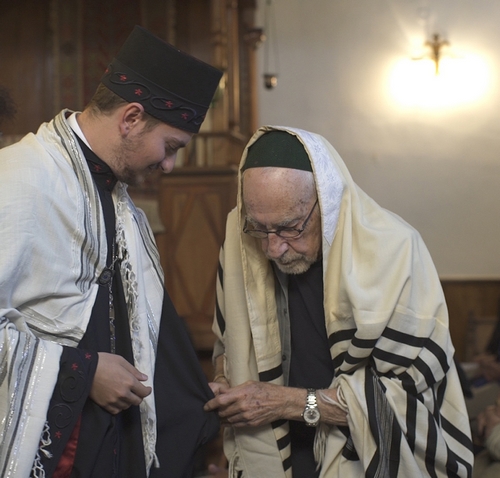
Two decades after its rededication, Etz Hayyim has once again become a fixture in the religious and socio-cultural life of Hania as a place of prayer, study, recollection and reconciliation.
Remembering Nikos
Nikos Stavroulakis, founding director of the new Etz Hayyim Synagogue and legendary figure in Greek Jewish life, passed away in 2017. The Etz Hayyim staff is currently cataloguing Nikos’ private collection of artifacts, books, documents and other items. The Nikos Stavroulakis Collection will eventually be made available to researchers and the general public.
If you have any materials (photos, letters, documents, etc.) relating to Nikos or his work, please email the Etz Hayyim staff: info@etz-hayyim-hania.org.
—
This article has been published as part of Gesher L’Europa, the National Library of Israel’s initiative to connect with people, institutions and communities across Europe and beyond, through storytelling, knowledge sharing and community engagement.


























